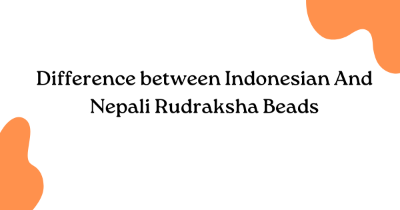
Indonesian and Nepali rudraksha beads come from the same family of trees and are of similar internal anatomy and effectiveness. Indonesian beads are much cheaper than Nepali ones because they are more abundantly available.
Size Comparision
Nepalese beads are available in sizes from 10mm to 42mm. 18mm beads are most easily available size.
Indonesain beads are available in sizes from 4mm to 30mm. 12mm beads are the most easily available size.
Mukhi (Facets) Comparision
In Nepalese beads, facets are marked with very clear grooves, whereas in Indonesian beads the facets are marked with thin lines, though the internal structure is the same in both beads. Both the Nepalese and Indonesian Rudraksha Beads have the same no. of seeds inside them as the number of Mukhas, thus their internal structure is almost identical.
Number of Mukhas (Facets)
Nepali rudraksha are generally found in 1 to 25 mukhis
Indonesian rudraksha are generally found in 1 to 35 mukhis
Though 1 mukhi in round shape has not been found for decades.
Availability and demand
Availabilty of higher mukhi beads are very rare. Nepali beads availability is much less than Indonesian one and demand for Nepali beads are high, as a result cost of Nepali beads is many fold higher than Indonesian cunterparts.
Effectiveness
Both the Nepalese and the Indonesian Rudraksha Beads have almost identical effects and this have been proved Scientifically as well as Spiritually based on the feedbacks received from the people who have been using the Indonesian Variety of Rudraksha. As such also all the Rudraksha Japa Malas are invariably made from beads of Indonesian Origin and they are being used and thanked for their effectiveness by people from all walks of Life since long long times.



